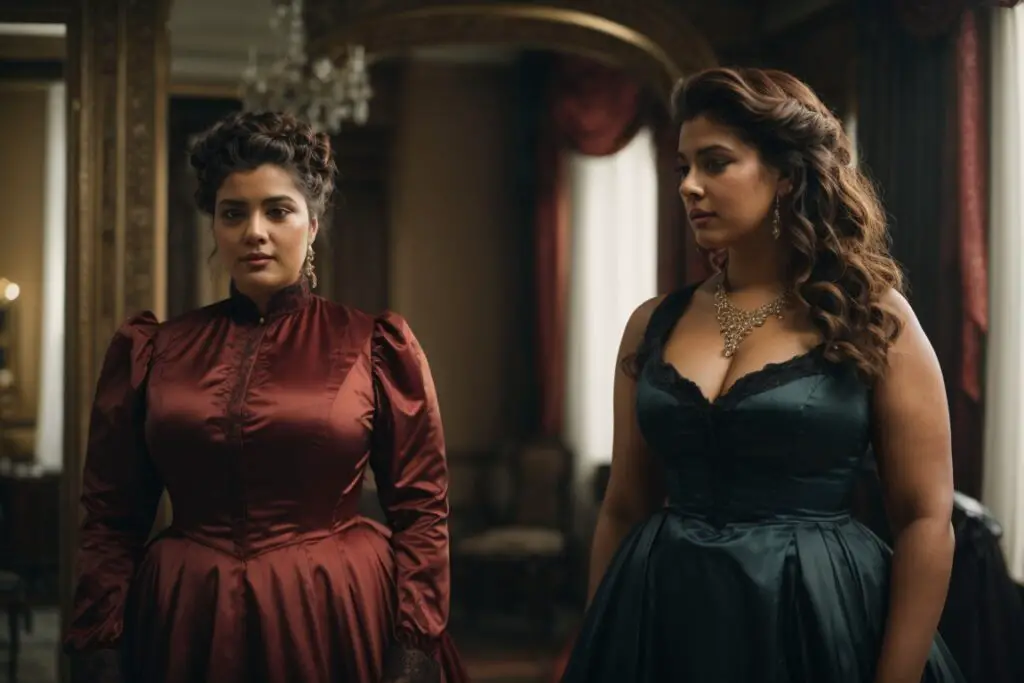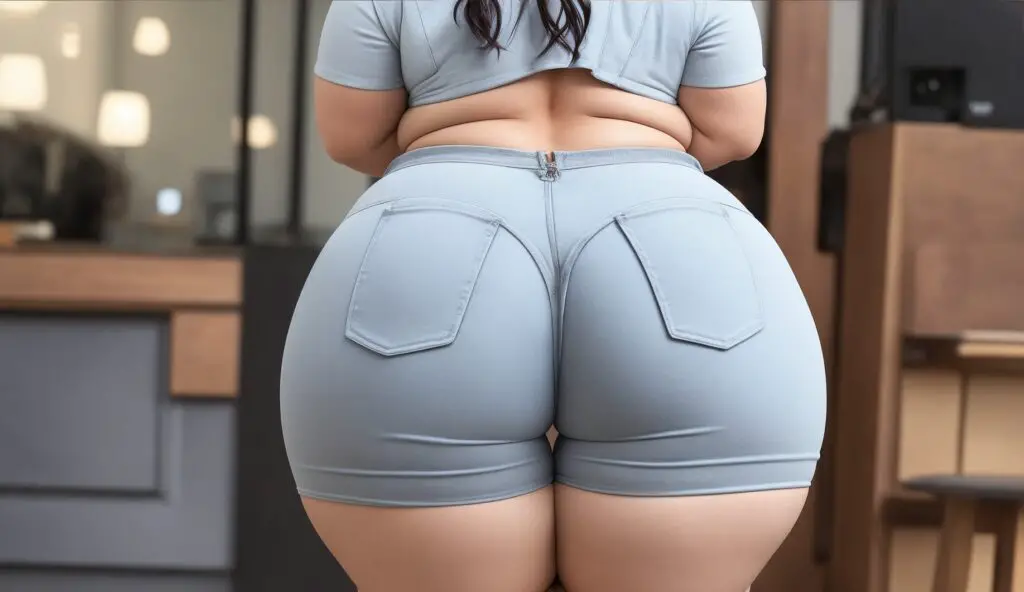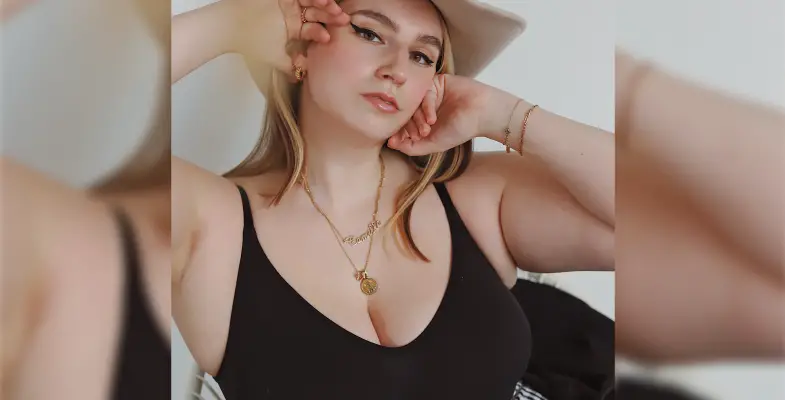The world of fashion has seen a remarkable evolution in body ideals over the years. From the voluptuous, curvaceous silhouettes of yesteryears to the lean and youthful figures celebrated in recent decades, and now, the resurgence of admiration for curvaceous, hourglass figures, the pendulum of beauty standards has swung widely. In this article, we will delve into the fascinating journey of how women’s body ideals in fashion have evolved over time, reflecting changes in culture, society, and technology.
The Curvaceous Era
The Victorian Influence: Corsets and Bustiers
The journey of body ideals in fashion can be traced back to the Victorian era, during the 19th century. This period celebrated the hourglass figure, marked by a tiny waist, ample bosom, and full hips. The iconic corset and bustier became essential elements of women’s fashion. Women cinched themselves into these constricting undergarments to achieve a highly coveted hourglass shape.
The Corset: The corset, made from whalebone, steel, or tightly laced fabric, was designed to reduce the waist size dramatically. It not only shaped the waist but also pushed up the breasts, giving women a distinct S-curve silhouette. It was a symbol of femininity, modesty, and social status.
The Bustier: The bustier, on the other hand, was designed to lift and enhance the bust, often incorporating padding and boning to create a more prominent cleavage. This combination of a cinched waist and a well-defined bust created an idealized feminine figure.
Women during this era aspired to fit into these constricting garments, which, unfortunately, came at a great physical cost. Tight-lacing, the practice of lacing the corset as tightly as possible, led to numerous health issues, including deformation of the ribs and organs, difficulty breathing, and fainting. Despite the physical toll, the Victorian era represented an era when women aimed for extreme curves in their quest for beauty.
The Gibson Girl: A New Ideal Emerges
The early 20th century brought a shift in beauty standards, epitomized by the emergence of the “Gibson Girl.” This new ideal was more athletic and active, representing a departure from the excessively curvaceous look of the Victorian era.
The Gibson Girl was characterized by a more natural and sporty appearance. She had a slender waist, a full bosom, and a graceful, athletic posture. The silhouette was achieved without the extreme tight-lacing seen in the previous century, and it aimed to project an image of independence and confidence.
The rise of the Gibson Girl marked a significant shift towards celebrating a more natural and healthy appearance, emphasizing physical fitness and self-sufficiency. This was reflective of societal changes as women began to take on more active roles in public life, including participating in sports and pursuing higher education.
The Slim and Youthful Ideal
The Roaring Twenties: Flapper Fashion
The 1920s saw another significant shift in beauty ideals, driven by the “flapper” fashion. The flapper was a young, liberated woman who challenged conventional norms and sought freedom in all aspects of life. The ideal body shape was characterized by a slim, androgynous figure with a straight, boyish silhouette. This marked a radical departure from the curvaceous figures of the previous eras.
The fashionable clothing of the time, including drop-waist dresses and knee-length skirts, accentuated the slender look. The focus was on being “boyish” and youthful, celebrating a more carefree and independent attitude.
The Mid-20th Century: Hollywood and the Hourglass
The mid-20th century, often referred to as the “Golden Age of Hollywood,” brought with it a new era of beauty ideals. Screen sirens like Marilyn Monroe and Sophia Loren exemplified the return to the hourglass figure. These iconic actresses, with their shapely, full figures, became the embodiment of feminine allure.
During this period, body confidence and curves were celebrated on the big screen and in fashion. The hourglass figure, characterized by a tiny waist, full bust, and rounded hips, was the ideal to which many women aspired. The famous hourglass silhouette was often achieved with the help of foundation garments, like girdles and bras, to enhance and shape the body.
This return to the hourglass figure marked a resurgence of the curvaceous ideal and emphasized sensuality and glamour. Women of the time aimed to achieve this look through fashion, undergarments, and, in some cases, surgery.
The Embrace of Slimness: The Twiggy Era
The 1960s presented a stark contrast to the curvaceous figures of the mid-20th century. Iconic British model Twiggy, known for her slender and androgynous appearance, became a symbol of the new beauty ideal. This era celebrated the “waif” or “twig-like” figure, which was characterized by an extremely slim and youthful body, often with minimal curves.
Twiggy’s pixie haircut and slender frame epitomized the swinging sixties. Fashion during this period emphasized a more streamlined, minimalistic look. Mini-skirts, shift dresses, and a lack of emphasis on the bust and hips marked a departure from the voluptuous figures of previous decades.
Twiggy’s rise to fame marked a shift towards celebrating a more androgynous and youthful body ideal, and this trend extended to fashion runways and advertising campaigns.
The Era of Supermodels and Fitness: The 1980s and 1990s
The 1980s and 1990s brought a wave of change to beauty standards in fashion. The era of the supermodel was characterized by iconic figures like Cindy Crawford, Naomi Campbell, and Claudia Schiffer. These models often possessed well-toned and athletic bodies, and they popularized the concept of “the body beautiful.”
The fitness craze of the 1980s and 1990s contributed to the rise of the toned and athletic ideal. Aerobics and bodybuilding became popular, and women aimed for a lean and muscular physique. The influence of fitness culture on fashion was evident in the rise of athleisure wear and the preference for figure-hugging, body-conscious clothing.
The “heroin chic” trend, popularized in the 1990s, introduced a much slimmer and more androgynous look. This controversial trend idealized an extremely thin, almost emaciated figure, with prominent cheekbones and a gaunt appearance. Models like Kate Moss came to symbolize this aesthetic, which drew criticism for promoting unhealthy body standards.
The New Millennium: A Diverse and Inclusive Approach
The turn of the 21st century witnessed a gradual shift towards greater diversity and inclusivity in the fashion industry. Fashion brands and designers began to embrace models of different body types, ethnicities, and backgrounds. The industry became more reflective of the diverse world we live in, and there was a growing recognition that beauty comes in many forms.
Plus-size models like Ashley Graham and Tess Holliday gained prominence and challenged the traditional standards of thinness. They empowered women to embrace their bodies and feel confident regardless of their size. The concept of “real beauty” began to gain traction in the fashion world, emphasizing authenticity over unattainable perfection.
The rise
of social media and body positivity movements played a significant role in this shift. Women, particularly through platforms like Instagram and YouTube, used their voices to challenge the narrow beauty ideals perpetuated by the fashion industry. The #bodypositivity and #effyourbeautystandards movements encouraged individuals to celebrate their bodies and embrace self-love.
The Return of the Hourglass: The Kardashian Effect
In the 2010s and early 2020s, there has been a noticeable return to the appreciation of curvaceous figures. The Kardashians, particularly Kim Kardashian and her hourglass figure, have had a substantial impact on shaping contemporary beauty ideals. Their influence on fashion, beauty, and popular culture has been undeniable.
Social media, especially Instagram, became a platform where celebrities and influencers showcased their curvaceous bodies. The hourglass figure, characterized by a tiny waist, a full bust, and pronounced hips and buttocks, became a sought-after aesthetic. Women started embracing shape-enhancing undergarments like waist trainers, padded bras, and shapewear to achieve this look.
This trend has also been associated with a growing focus on fitness and health. Women aspire to be fit and strong, combining a curvaceous figure with toned muscles. The emphasis is on a healthy and active lifestyle while maintaining the desired hourglass shape.
Factors Shaping Contemporary Beauty Ideals
The ever-shifting beauty ideals in the fashion industry are influenced by a complex interplay of various factors, including:
Cultural Shifts
Cultural shifts play a crucial role in shaping beauty ideals. Changes in societal values, gender roles, and aspirations impact what is considered beautiful. For instance, the shift from the Victorian era’s emphasis on modesty to the liberated flapper fashion of the 1920s reflected changing attitudes towards women’s roles and autonomy.
Technology and Media
Advancements in technology and the media have a profound impact on beauty standards. The rise of Hollywood and the advent of cinema in the mid-20th century shaped popular culture and disseminated beauty ideals. The emergence of the internet and social media in the 21st century accelerated the pace of change by providing platforms for influencers and diverse voices.
Body Positivity and Inclusivity Movements
The body positivity and inclusivity movements have had a significant influence on contemporary beauty ideals. They challenge the traditional notions of beauty and celebrate diversity, encouraging people to embrace their bodies as they are. This shift is reflected in the fashion industry’s increasing inclusion of models of different sizes, ethnicities, and genders.
Celebrity and Influencer Culture
Celebrities and social media influencers have become influential arbiters of fashion and beauty. Their impact on trends and beauty standards is undeniable. The Kardashian family, for example, has played a prominent role in popularizing the curvaceous hourglass figure.
Historical References and Nostalgia
Fashion often cycles through historical references and nostalgia, revisiting past eras for inspiration. Designers draw from the past to create new looks that resonate with contemporary sensibilities. This can lead to the revival of certain beauty ideals, as seen with the return of the hourglass figure.
The Fashion Industry Itself
The fashion industry, including designers, brands, and advertisers, has a profound influence on beauty ideals. They shape the standards and aesthetics that dominate the industry. The choices made by designers and brands can promote certain body types and influence what is considered fashionable and desirable.
The Impact of Beauty Ideals on Women’s Lives
The ever-changing beauty ideals in fashion have significant consequences for women’s lives, self-esteem, and health. It’s important to acknowledge the real-world impact of these shifting standards:
Self-Esteem and Body Image
Beauty ideals can significantly affect women’s self-esteem and body image. The pressure to conform to certain standards can lead to body dissatisfaction and a negative self-perception. Women may feel inadequate if they do not meet the prevailing beauty standards of their time.
Mental and Emotional Health
The pursuit of beauty ideals can take a toll on mental and emotional well-being. The pressure to achieve a certain look can lead to anxiety, depression, and eating disorders. The constant comparison to unattainable standards can be damaging to one’s mental health.
Physical Health
Extreme practices to achieve beauty ideals, such as excessive dieting, cosmetic surgeries, or extreme exercise regimens, can have detrimental effects on physical health. These practices can lead to nutritional deficiencies, injuries, and long-term health problems.
Economic Implications
The fashion and beauty industry is built on the notion that consumers need to attain a certain look to be considered attractive. This can lead to significant financial expenditures on beauty products, treatments, and surgeries. The economic impact of beauty ideals is substantial, as women invest in various products and services to meet these standards.
Conclusion
The journey of beauty ideals in fashion is a complex and ever-evolving one. From the curvaceous figures of the Victorian era to the androgynous looks of the 1920s and the hourglass figures of the mid-20th century, the pendulum of beauty standards has swung widely. Contemporary beauty ideals reflect a combination of diverse factors, including culture, technology, media, and social movements.
As society continues to evolve and embrace inclusivity, it’s important to recognize the role that the fashion industry plays in shaping and reflecting these ideals. Women should be encouraged to celebrate their bodies in all their diversity and uniqueness. The shifting beauty ideals of fashion remind us that beauty comes in many forms, and the most important thing is to feel confident and comfortable in one’s own skin.
Ultimately, the fashion industry has the power to redefine beauty ideals and encourage women to embrace their individuality, promoting not only outer beauty but also inner strength and self-confidence. The current resurgence of curvaceous hourglass figures serves as a reminder that beauty is a dynamic concept, and embracing change is essential to promote a more inclusive and diverse fashion landscape.



